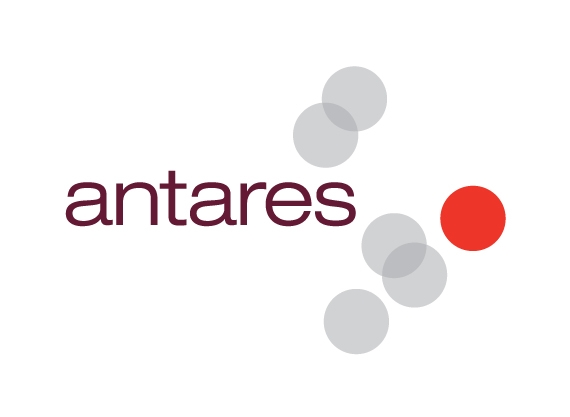China’s changing consumption is reshaping these Aussie stocks
During the June quarter, we visited China to better understand the Chinese consumer sector. Key areas of interest included wine (Treasury Wine Estates), infant milk formula (A2 Milk), international education (IDP Education) and electric vehicles (EVs).
We visited three major cities - Shanghai, Hangzhou, and Beijing - and met with over 20 local industry participants. These included listed companies such as VATS Liquor, Yonghui Superstores, Feihe, COFCO Corporation, and New Oriental Education. We also engaged with unlisted players like China State Farm, China Boxi International, Fuyu Shanghai, and consultants including China Skinny and ASC Fine Wines.
In addition to meetings, we conducted site visits to major retailers including Hema Fresh (owned by Alibaba) and Metro China's flagship store in Shanghai. Our hosts also arranged two consumer focus groups, one each on imported wine and infant milk formula.
A number of consistent themes emerged that are relevant to investors in Australian equities:
Chinese consumers are becoming more selective and cautious
Amid a broader economic downturn, the Chinese central government has promoted a theme of cutting wasteful spending. This includes measures such as banning luxury wine purchases by state-owned enterprises (SOEs) and promoting domestic products like yellow rice wine at official events—both of which have impacted consumer sentiment toward imported luxury goods.
Encouragement of local production, under the banner of "Made in China for Chinese," continues to gain traction. In the infant milk formula (IMF) market, domestic brands such as Feihe, Yili, and Mengniu are taking share even in Tier 1 cities, displacing imported products.
China’s birth rate faces structural challenges
Despite a modest uptick in 2024 (Year of the Dragon), the overall birth rate remains weak. Many believe the government-reported 9.4 million births in 2023 are overstated by around 10%. Independent estimates suggest the average birth rate is 0.8 children per couple, with Shanghai being the lowest at ~0.6.
While local governments have begun offering birth subsidies (up to RMB 100,000 over 10 years for families with three children), these amounts are viewed as insufficient. Many parents indicated that subsidies covering early childcare expenses would be more meaningful.
International education and migration remain top priorities
Education continues to be one of the highest spending priorities for Chinese households—after food and housing. Our meeting with New Oriental (China’s largest international education and overseas testing provider) revealed strong and growing interest in overseas education. More private international schools are being established and public schools are increasingly offering international curricula.
The trend is starting at younger ages, and demand is sticky - families who choose the international path rarely return to the domestic system. Overseas education is viewed as more comprehensive and higher quality, especially by parents who have studied abroad themselves.
China’s electric vehicle (EV) industry is booming
The Chinese government has allocated RMB 89 billion in EV subsidies for 2025 which is expected to stimulate sales of an additional 1.6 million vehicles. New Energy Vehicle (NEV) penetration reached 37% in 2024 and is expected to rise to 45% in 2025. In wholesale passenger vehicles, NEVs are forecast to reach 57% of the market.
We were surprised by the sheer variety and scale of self-owned Chinese EV brands, spanning entry-level (RMB 30,000) to high-end (RMB 1 million) models. Domestic brands are expected to maintain market share momentum, accounting for ~63% of NEV sales in 2024 and potentially 70% by 2025.
Chinese EVs are also entering global markets, with export volumes growing at a 20% compound annual growth rate (CAGR) over the past two years, and expected to grow at mid-teen rates in coming years. Chinese vehicle manufacturers are competitive not just on price, but also in technology—including intelligent cockpits, battery systems, and advanced driver assistance system (ADAS) features.
Company insights and what this means for our portfolios
Treasury Wine Estates (ASX: TWE)
Positives:
- Parallel channel inventory is being cleared, now representing ~25% of the market (down from over 50%).
- The wholesale price gap between parallel and official channels has narrowed to 8–12% (previously 20–30%).
- Strong brand awareness: Penfolds remains a leading brand for both retail and business consumption.
- Entry-level wines are performing relatively well, supported by retail partnerships like HiMart. Koonunga Hill is the fastest-growing Penfolds item by volume.
Challenges:
- Mid-tier wine consumption (RMB 500–2,000) remains weak, with consumers favouring sub-RMB 200 options or ultra-premium SKUs (RMB 5,000+), squeezing TWE’s core offering (e.g. Bin 389, Bin 407).
- Around 80% of Penfolds consumption is in business settings; government anti-waste policies, especially among SOEs (which account for ~20% of the market), remain a headwind.
- Following the removal of import restrictions in March 2024, TWE ramped up distribution, but current inventory levels remain elevated due to weak demand.
- Price gaps remain stark: parallel products sold via e-commerce are ~30% cheaper than official SKUs.
- Distributors believe TWE cannot raise prices in the near term due to market sensitivity, and view efforts to push high-end products as ill-timed.
A2 Milk (ASX: A2M)
Positives:
- A2 commands ~9% market share in China, with strong brand recognition in Tier 1 cities. Its "A2 purple" branding is being mimicked by local players.
- Strategic expansion into Tier 3–4 cities via 29,000 offline mum-and-baby stores is viewed positively.
- Launch of its China-label IMF with new packaging and formula aligns with local preferences and regulatory expectations.
- While local IMF brands are offering aggressive subsidies (up to 6 free tins), the impact on A2 is limited given differing target demographics.
- Chinese parents research IMF products in detail—HMO, A2 protein, milk source, etc.—and often test multiple brands before settling.
- Only 30% of mothers breastfeed, and many switch to IMF after 6–9 months, driving demand for Stages 2 and 3 (73% of the market).
Challenges:
- Births declined again in Q1 2025. Only 1.8 million marriages were registered in Q1, and annual births could fall to 6 million by 2030.
- Though not highly price sensitive, some consumers are trading down from premium to mid-tier brands—especially in Stage 3 IMF.
- Chinese IMF companies are initiating various promotion programs, including free samples of up to six tins of products which could cover up to two months of consumption.
- The Daigou channel (ie items purchased by individuals or companies in Australia for sale in China) still exists but has diminished; ~10% of A2 English-label IMF is still sold this way.
IDP Education (ASX: IEL)
- The international education market has rebounded strongly post-COVID. New Oriental Education (China’s biggest international education training and testing provider) saw 30–40% growth in 2023/24 and is targeting another 20% this year.
- The UK has overtaken the US as the top overseas study destination, followed by Australia. EU and East Asian destinations are also gaining share. Hong Kong has become increasingly popular post-COVID.
- Despite the government’s “double reduction policy” (aimed at limiting after-school tutoring), demand for private education remains high. Many institutions have pivoted to 1-on-1 training outside the formal system, driving up prices due to supply shortages.
- IDP’s planned entry into the IELTS (international English language testing) market via a partnership with New Channel is noted, though New Oriental considers this a small part of the overall education ecosystem.
Portfolio Implications
Following our recent visit, we have gained greater insight into potential near-term risks across several holdings.
As a result, we have reduced our exposure to Treasury Wine Estates (TWE) in select portfolios to better manage short-term uncertainty. While current headwinds remain, we view them as largely temporary in nature. Brand awareness remains strong, and we are confident that the company’s experienced management team is well-positioned to address these challenges over the medium term. We continue to monitor the Chinese mid- to high-tier wine market closely for signs of recovery.
Our view on A2 Milk has become more balanced. On the one hand, there are near-term opportunities, including new product launches and greater penetration into lower-tier markets. However, the structural challenge posed by declining birth rates in key regions is significant and difficult to reverse. For this reason, A2 Milk is not currently held in any of our portfolios.
The increasing appetite for international education should be a positive for IDP, but lower international student numbers in most markets remain a headwind. Our view on the company is more positive after our visit but we will wait to see how its IELTS launch progresses
Based on the development of the Chinese electric vehicle (EV) market, we believe the trend toward electrification is irreversible. EVs are expected to continue gaining market share from traditional internal combustion engine (ICE) vehicles. China is at the forefront of this transition, and we anticipate an increase in Chinese EV exports to Western markets over time.
As a result, our conviction has strengthened that global oil demand is facing long-term structural headwinds. Reflecting this view, Antares portfolios continue to maintain an underweight position in traditional energy companies.
Long / short investing on the ASX to increase opportunities
The Antares High Growth Shares Fund is an actively managed portfolio of Australian equities listed, or expected to be listed on the Australian share market investing in both long and short positions. Learn more below.

3 stocks mentioned
1 fund mentioned

